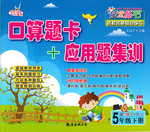题目内容
A teacher from Relax Kids in Tamworth, UK, used two apples to show her students the damaging, and often unseen, consequences of bullying. And her post about the powerful lesson has gone viral.
Rosie Dutton explained that during one of her classes she introduced the children to two red apples. What the kids didn't know was that prior to the lesson, Dutton had repeatedly dropped one of the apples on the floor. And yet, on the outside at least, both apples looked perfect. "I picked up the apple I'd dropped on the floor and started to tell the children how I disliked this apple, that I thought it was disgusting, it was a horrible colour and the stem was just too short," Dutton wrote.
She then encouraged the students to do the same. Some of the children looked at her like she was “crazy”, but the students passed the apple around the circle, calling it names.
Continuing the exercise, the teacher then passed the second apple around the circle. This apple, however, was showered with comments like: “Your skin is beautiful," and "what a beautiful colour you are."
Dutton then showed the students both apples once again, highlighting that "there was no change, both apples still looked the same."
That is, until she cut them open. "The apple we'd said unkind words to was bruised and all mushy inside," she said.
There was, she said, an immediate "light bulb" moment for her students. "They really got it. What we saw inside that apple, the bruises, the mush and the broken bits is what is happening inside every one of us when someone mistreats us with their words or actions."
Dutton explained how important it is to teach children to stand up for one another, and to stop any form of bullying.
“Let’s create a generation of kind caring children,” the teacher wrote. “The tongue has no bones, but is strong enough to break a heart. So be careful with your words.”
1.What had the teacher done to the first apple before the lesson?
A. She had introduced it to the kids.
B. She had damaged it purposely.
C. She had made it look perfect.
D. She had coloured it brightly.
2.What does the underlined part “calling it names” (Para. 3) mean?
A. Saying rude things. B. Making fun of it.
C. Cheering for it. D. Shouting at it.
3.What did the teacher instruct the kids to do with the second apple?
A. Drop it. B. Praise it. C. Ignore it. D. Observe it.
4.What’s the purpose of the teacher’s using two apples in class?
A. To draw the kids’ attention.
B. To explain her personal preferences.
C. To make a comparison between them.
D. To help the kids understand the results of bullying.
 口算题卡加应用题集训系列答案
口算题卡加应用题集训系列答案
